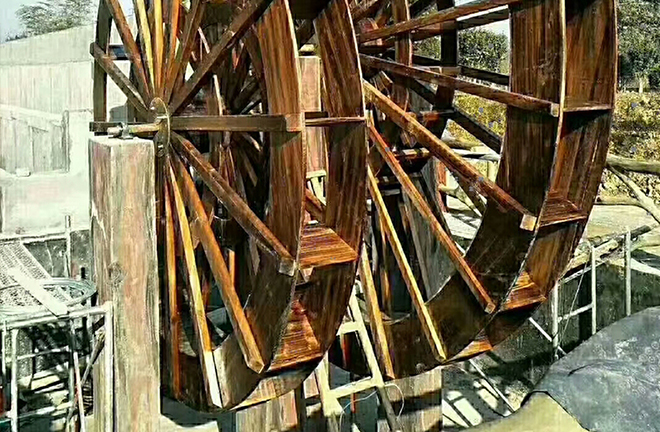Farming culture seeks transition to modernization

The water wheel, a agricultural machine for converting the energy of flowing water into useful forms of power, often in a watermill. photo: FILE
Farming culture is a unique culture long retained by China’s rural society, which has great value to be inherited and utilized. A type of cultural synthesis germinated, was nourished, and developed since the feudal era, evolving throughout years. Farming culture in regions south of the lower reaches of the Yangtze River and the culture’s inheritance and protection is today a topic of urgency in the strategic context of agricultural modernization. To uncover the historical origins and evolution of agricultural civilization in these regions and delve into farming culture’s attributes, as well as the predicament it faces in the process of agricultural modernization, is of practical significance.
The first challenge is that the legacy of farming culture is now accelerating its pace of decline. As industrial process speeds its pace, misunderstandings of the law in which agriculture develops intensify. In many regions, the mindset for industrial development is applied to agriculture in a simple way. Crop planting methods lopsidedly pursue high yield and commercialized density, which leads to overconsumption of agricultural resources and severe pollution of the ecological environment in rural areas. In addition, under the “siphon effect” of urbanization, labor forces transfer in rural areas to industrial sectors and urban areas, which empties rural villages. Some traditional cultural buildings have fallen into disrepair, and as a consequence, resources that carry farming culture’s attributes are increasingly sparse.
Farming culture’s legacy also faces an inheritance crisis in the changing environment. As the land transfer and population flow accelerates, it is increasingly common for farmers to undertake part-time jobs. Some farmers even move their houses and all their family members for these jobs. Relationships between farmers loosen and people are less likely to conduct agricultural and folk activities by laboring and living together within common spaces.
The next challenge is the insufficient protection of farming culture’s legacy under the framework of the current policy management system. Since there is now no authoritative definition for the concept, nor for ideas derived from this type of legacy, large numbers of legacies are hard to be identified as cultural relics or intangible cultural heritage. The protection of these legacies thus cannot be conducted according to statutory rules and regulations. In addition, the local cultural legacies are hard to effectively protect due to financial limits in regions rich with farming culture.
Although fundamental for Chinese rural society’s survival over the last thousand years, farming culture now faces the crisis of perishing. To strengthen its inheritance and protection, and enliven its usage to retain the root and soul of agricultural civilization, is not only a responsible act for history, but also for the future.
This can start with a thorough investigation of farming culture’s legacies according to different categories, such as folk dwellings, farm tools, the natural environment, traditional customs, and other farming cultural resources. Those of great value for protection and preservation should be selected and listed as protection targets.
The protection priority list can cover tangible remains such as folk dwellings, buildings, bridges, waterside pavilions, looms in the handicraft industry; natural resources including wetlands, rivers, ponds, canals, ancient and notable trees; agricultural production methods including mulberry planting, silkworm breeding, animal husbandry, and fishing; traditional folk customs including marriage and funeral rituals, temple fairs, sacrificial offerings, and folk songs. Recordings of targets for protection can be made by means of an array of methods including textual recording, video shooting, and digital media to form a detailed archival database. Protocols that stipulate different protection levels and operational rules can be formulated, according to historical and cultural values carried by different legacies, and their degrees of endangerment.
The last task is to gradually improve the protection system from a policy perspective. Some farming cultural legacies can be included in the legal protection system. Legacies that are remotely practiced can be displaced and relocated, or renovated in their current locations, which can help make them more integrated as a whole. The general aim is not to damage these legacies, and to protect them well. For those legacies that are relatively concentrated regarding their locations, the establishment of protective zones can be explored. Portable legacies can be moved and collected into museums, and displayed in different categories to publicize the farming culture.
Ji Xiaoqiao is a lecturer from the School of Sociology and Population Sciences at Nanjing University of Posts and Telecommunications.
Edited by BAI LE
